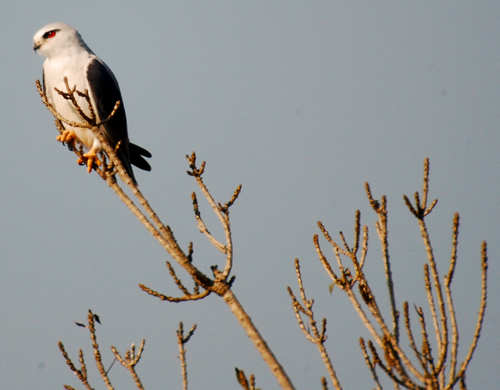In my effort to find ways to incorporate more exercise into my daily routine and cut back on using my car, I've been bike birding when I can. I've written about it before and how I attach my spotting scope to my bike so I can tote it around.
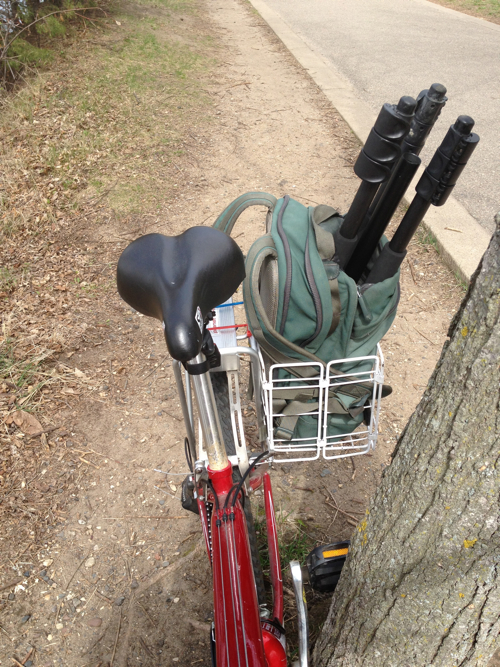
Since I've been playing around with using my iPhone instead of my SLR for digiscoping, it leaves a bit more room for toting in the backpack. In the past I have had to attach my tripod to the back of the bike with bungee chord because my backpack had the scope and the SLR. But if I leave my SLR at home I can slide the tripod into my backpack. The backpack doesn't close all the way around, but enough that it holds the tripod and scope securely in place, especially when wedged into my bike basket.

Although my bag did have one tragic accident this week. Our rabbit Dougal decided he wanted to give chewing zippers a try and he's damaged one of the zippers on the outer pocket. Just like a bunny, they wrap you around their little paw and then when you have fallen for them hook, line and sinker they begin their chewing siege on your home. But thanks to Twitter, I have leads on someone who can repair it...can I get fixed before The Biggest Week In American Birding and Point Pelee Fest though? I love that above photo, he looks like he's been caught trying to use my iPad.
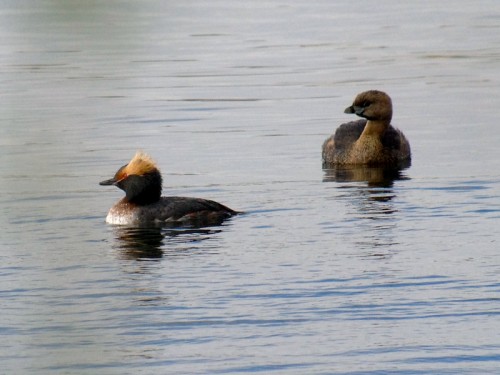
Here's a shot I got iPhonescoping while biking last week of a horned grebe and pied-billed grebe while biking the lakes around my home. I like how having a smart phone reduces what I take in the field. My phone has the ability to hold multiple field guides, the ability to submit sightings directly to eBird from the field and is a camera. The only thing it's missing is the ability to use it as a binocular and a bottle of water.
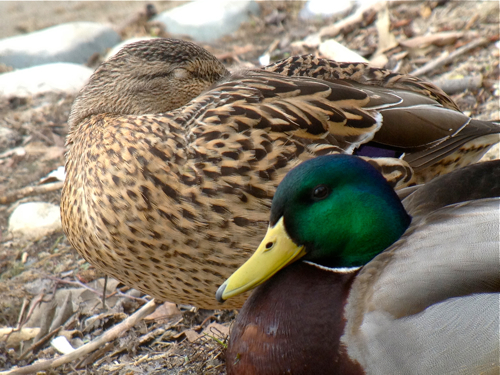
I will say, it's not quite as easy as getting shots with an SLR, it's similar to getting photos with a point and shoot as far as burst mode goes. But most of my photos end up here or on Facebook and Twitter and for simply sharing shots, I like the portability of using my phone instead of a large camera in the field. When I need serious photos for a book project, I can still take my SLR out in the field, but for general birding or light birding, the iPhone set up works well (although some of my iPhonescoped shots will end up in my next book).
I'm still pining for an adapter to hold my iPhone to my scope. I had high hopes last week when I was sent a prototype for a planned Kickstarter project for an iPhone adapter. I knew it was too small to work with my scope, but it looked like it would work for my binoculars. Alas, my Swarovski ELs are just a hair too wide for it. But it if you have smaller eye cups, a microscope or telescope, it could work well for you. I hope their Kickstarter is a success...maybe it will encourage them to work on another adapter that works with modern field optics with large eyepieces.
But, I do hear there are more in the works, so my dream can't be far off of securing my iPhone to my scope. When that happens, I'll be able to take video and I have a dream of taking off and doing daily birding shows based on what I can get with my scope and phone.

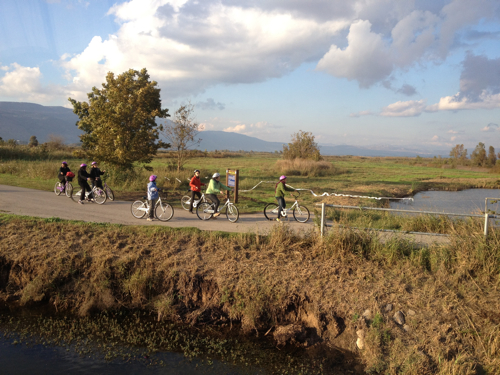 I've blogged already that the
I've blogged already that the 












